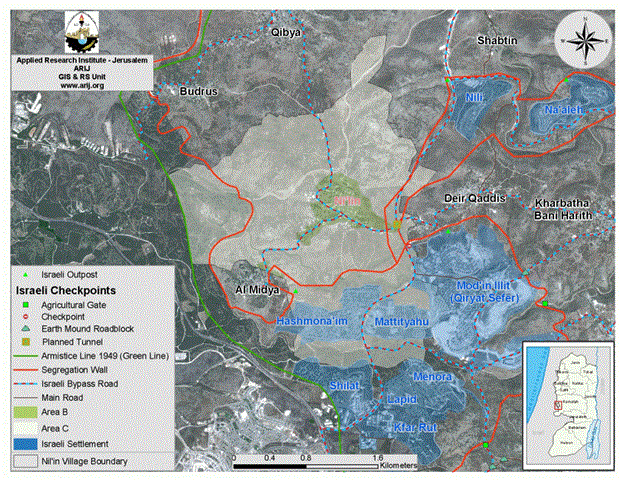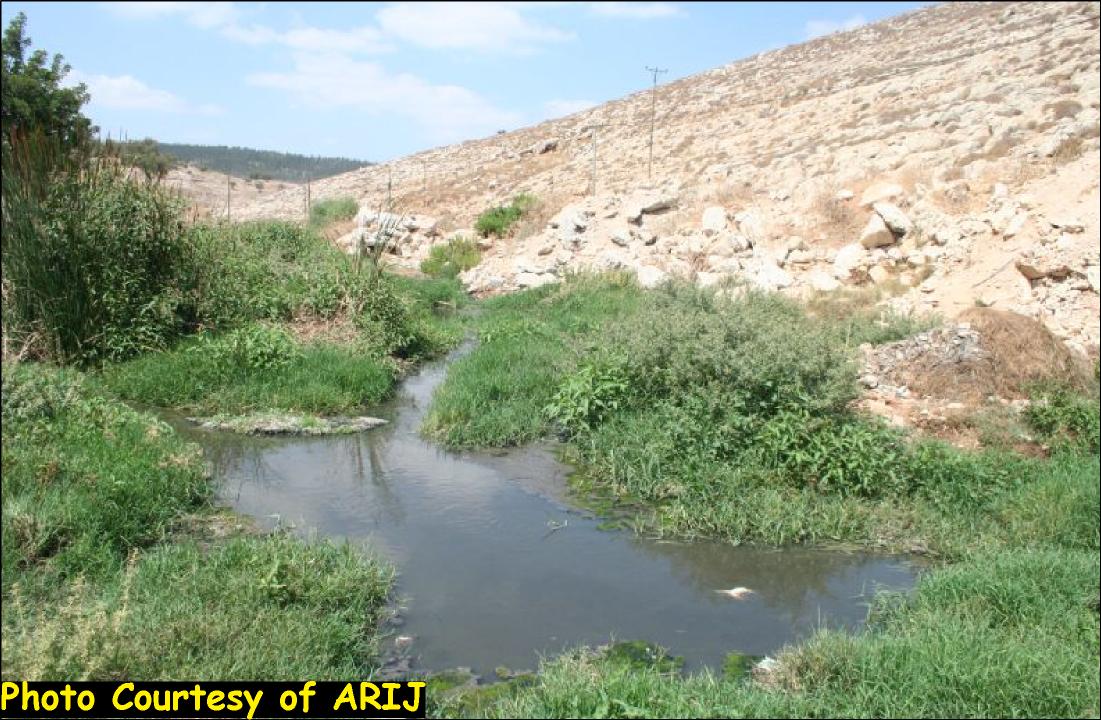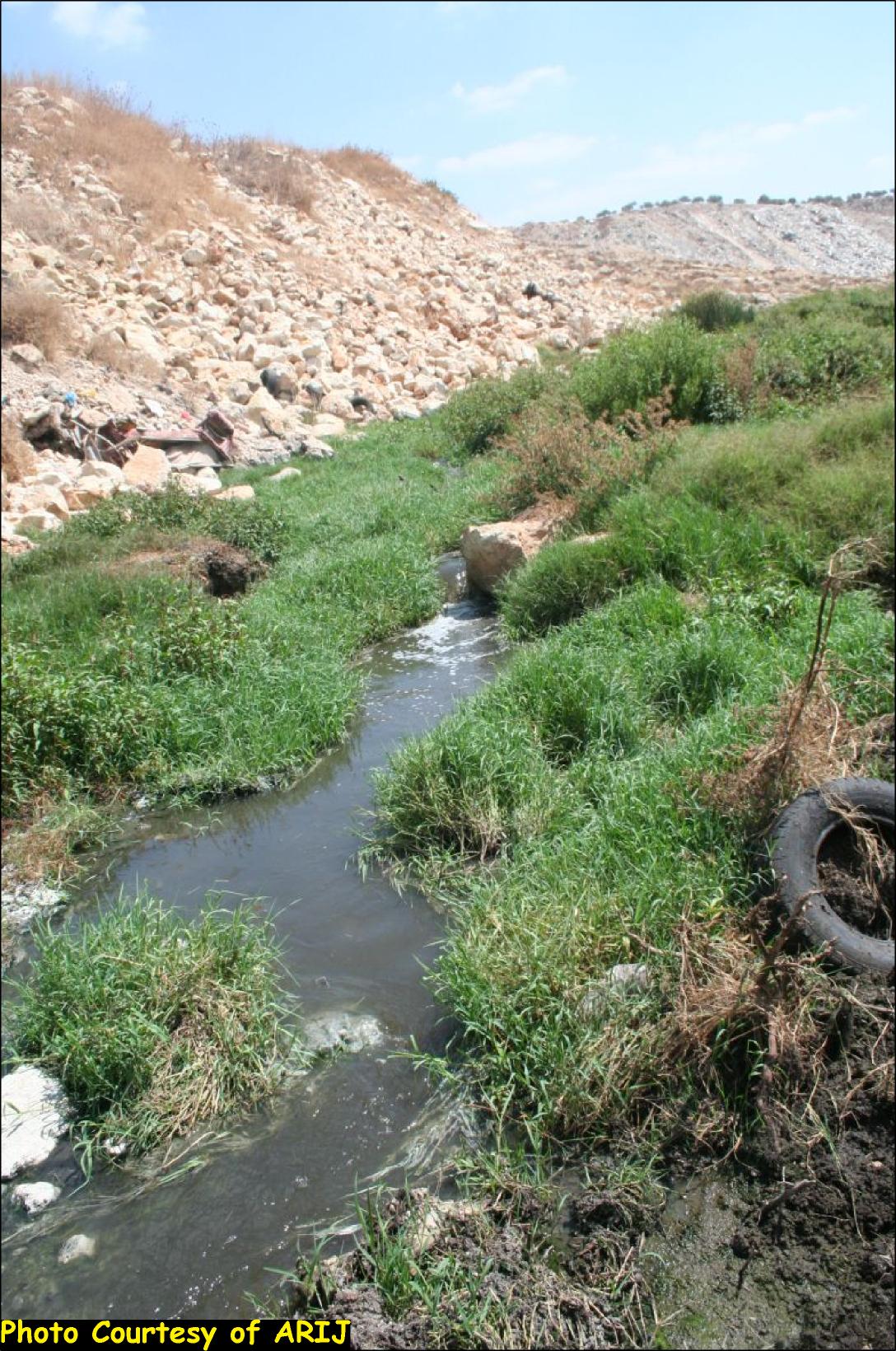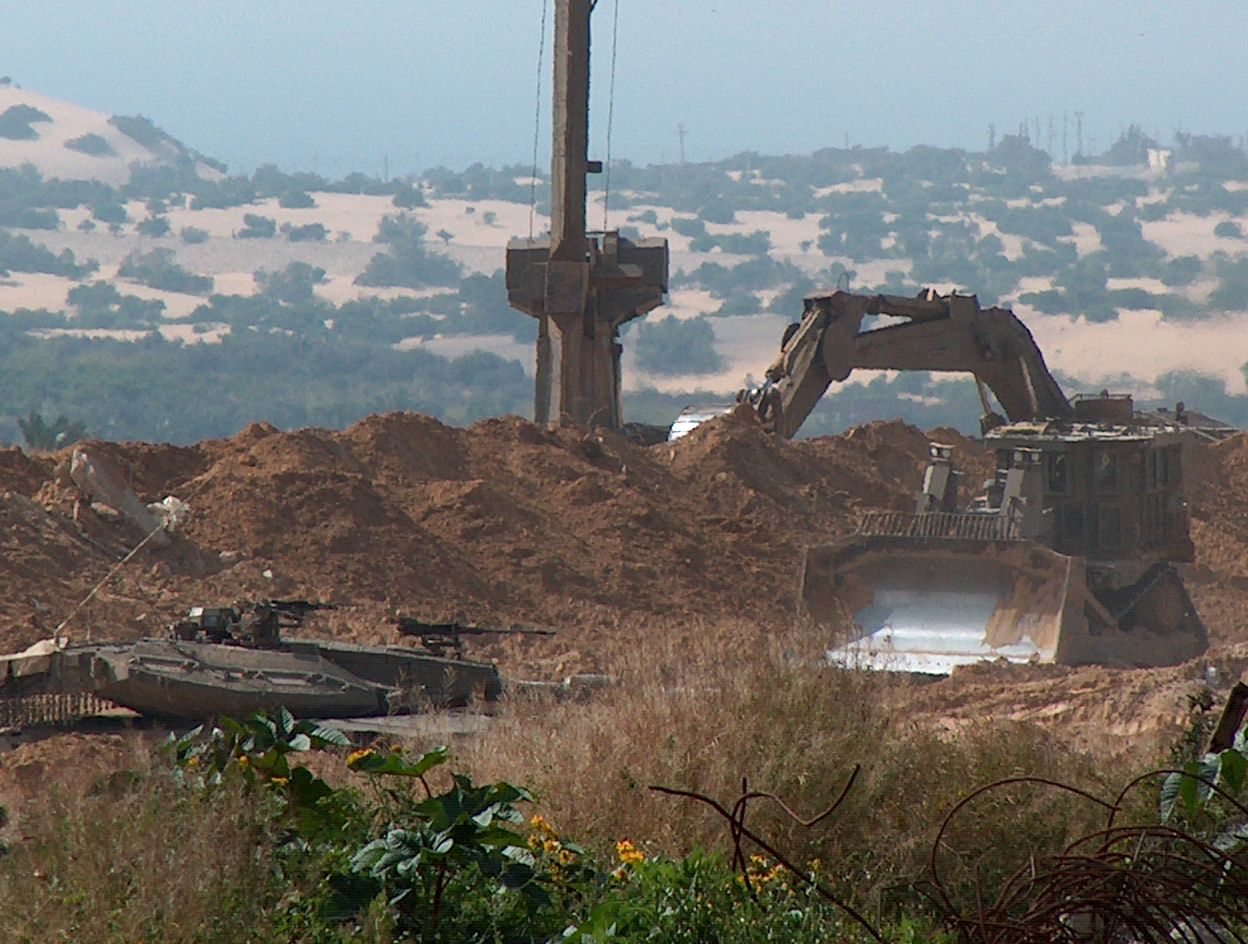Location and Population
The village of Ni'lin is located some 18 kilometers to the west of Ramallah city; It is bordered by Deir Qiddis Village, the settlements of Nili and Na'aleh from the east, Al Midya Village and Modi'in Illit (Kiryat Sefer) settlement bloc from the south, Budrus and Qibya villages from the North, and the 1949 Armistice Line (Green Line) from the west, about 3 kilometers away from it.
The urban area of the village stands on 660 dunums of land, about 4.5% of the village's total land area and is a home to 4,751 inhabitants (PCBS 2006), most of whom tended to work in Agriculture after loosing their jobs as constructional workers inside Israel following the eruption of the second Intifada in September 2000.
Before the 1948 war, Ni'lin village had an area of 15898 dunums; when the armistice agreement was signed between the Jordanian and Israeli sides, 1104 dunums were lost from the village's area. Today, the village stands on 14794 dunums of land.
The Oslo II Land Classification
In the Oslo II Interim Agreement that was signed in September 1995 between the Palestinians and Israelis, the Palestinian areas in the West Bank were classified into three areas A, B and C which aimed at a phased withdrawal of the Israeli military forces from these areas until the accomplishment of a final status agreement.
Accordingly, the 14794 dunums of Ni'lin Village were classified to areas B and C; 988 Dunums of which were classified as Area B (6.7 % of the total village area) where most of the built up area is concentrated; while the remaining area of the village, a total of 13806 dunums of Ni'lin village lands were classified as Area C (93.3 % of the total village area) and contain all the agricultural lands and the open spaces in the village. See Table 1
|
Table 1: Classification of Lands in Ni'lin village according to Oslo II Agreement of 1995 |
||
|
Classification of Area |
Area in dunums |
% of the Village's total area |
|
Area A |
0 |
0 |
|
Area B |
988 |
6.7 |
|
Area C |
13806 |
93.3 |
|
Total Area |
14794 |
100 |
|
ARIJ GIS Database – 2007 |
||
The Israeli Colonial Activities in Ni'lin Village following the 1967 War
Following Israel's occupation of the West Bank and the Gaza Strip in 1967, the successive Israeli Governments adopted a policy of land confiscation for the various Israeli purposes which were mostly exemplified in the establishment of Settlements, bypass Roads and military bases.
Accordingly, the village of Ni'lin witnessed the confiscation of its lands for the establishment of five Israeli settlements which stand on 1963 dunums, 13.3% of the village's total land area. The settlements are a home to more than 40,000 Israeli settlers as illustrated in Table 2 below
|
Table 2: Israeli Settlements inside Ni'lin's village Boundary |
||||
|
Settlement Name |
Date of Establishment |
Population (2006) |
Settlement area Inside village Boundary (Dunum) |
Total settlement Area (Dunum) |
|
Hashmona'im |
1985 |
2400 |
934 |
1050 |
|
Mattityahu |
1980 |
1400 |
661 |
683 |
|
Menora |
1998 |
1804 |
20 |
759 |
|
Shilat |
1977 |
376 |
74 |
978 |
|
Mod'in Illit (Qiryat Sefer) |
1991 |
34500 |
274 |
3973 |
|
|
|
|
|
|
|
Total Area |
|
40480 |
1963 |
7443 |
Source: ARIJ GIS UNIT 2007
The Israeli Segregation Plan in Ni'lin Village
The construction of the Israeli Segregation wall had its devastating impact on Ni'lin village as it extends a length of 8.7 km on lands of the village and cuts its southeastern part from the remaining area of the village. See Table 3 & Map 1
|
Table 3: Status of the Israeli Segregation Wall in Ni'lin Village |
||
|
Wall Status |
Length (km) |
Percent from Total Wall Length in Ni'lin Village |
|
Existing Phase |
2.7 |
31 |
|
Under Construction Phase |
3.1 |
35.6 |
|
Planning Phase |
2.9 |
33.3 |
|
Total |
8.7 |
100 |
Source: ARIJ GIS Database 2007
Upon completion, the wall will cause the confiscation and isolation of 5883 dunums of Ni'lin's lands, 39.8% of the village's total land area, most of which are agricultural and open spaces. The wall will also annex the five Israeli settlements established on Ni'lin village's land to Israel's proper. See Table 4 for more information
|
Table 4: Land Use Land Cover of Ni'lin Village |
|||
|
Land use Land cover 2006 for Ni'lin Village Boundary |
Total Area in Dunum |
Isolated Lands from Ni'lin's Village lands (dunum) |
% from Total Village Area |
|
Agricultural Lands |
5487 |
1059 |
7.2% |
|
Forests and Open Spaces |
6684 |
2847 |
19.2% |
|
Palestinian Built-up Area |
660 |
14 |
0.1% |
|
Israeli Settlement |
1963 |
1963 |
13.3% |
|
Total Area |
14794 |
5883 |
39.8% |
Source: ARIJ GIS Database 2007
The impact of the Israeli Occupation practices on the Environmental status of Ni'lin village.
The Israeli activities in Ni'lin village not only target land but also contribute to the destruction and pollution of environment. The Israeli settlements established on lands of Ni'lin village play a major role in increasing the environmental problems in the village as Israeli settlers dispose their solid and wastewater generated from settlements to the neighboring Palestinian lands which are also inhabited by Palestinians from the village; Two sites were noticed growing due to the huge amounts of wastes being dumped into them. The first is located in Area 'C', on a piece of land belonging to Mr. Hussein Khalil Mohammed Nafe' and is very close to the urban area of the village and stands on 20 dunums of land.
The second dumping site is located on a piece of land belonging to Mr. Abdul Hakeem Abdul Nabi Al-Absi and stands on an area of 30 dunums and is relatively far from the urban area of the village. Both sites are not licensed by the village council neither by any other official body and don't apply to health and environmental laws and legislations.
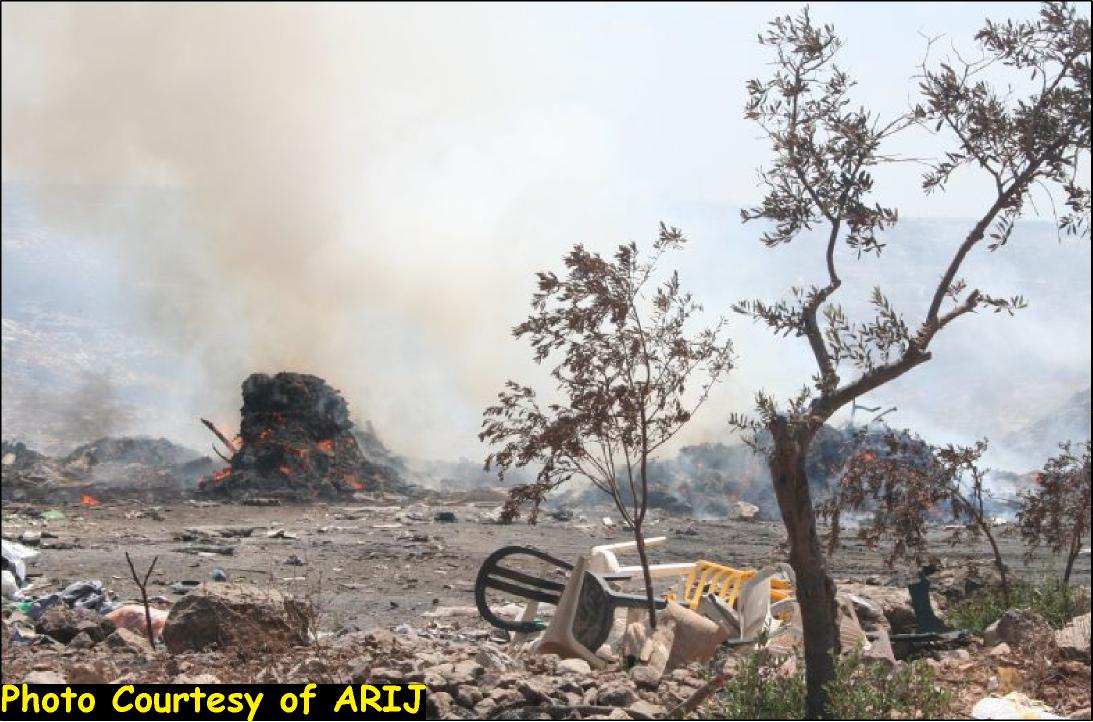
The dumping site established on lands of Muhamamd Hussein Khalil Nafe'

The dumping site established on lands of Abdel Hakim Abdel Nabi
Reports of illegal disposal of solid wastes date back to year 2005, when residents of Ni'lin village started to notice the Israeli trucks dumping solid waste into the aforementioned sites. After a thorough investigation made by village residents and the Municipality of Ni'lin, it turned out that the solid waste being dumped comes from Israeli settlements established on lands of Ni'lin village and others located inside the 1949 Armistice Line (Green Line). It's worth mentioning that the dumping sites, although stand on Palestinian lands; they don't serve the Palestinian urban community of the village.
During a field visit to the site, it was noticed that the solid waste being dumped contains plastic wastes, rubber, remnants of building and constructions which include cement blocks, iron, aluminum, copper and wood. Villagers and land owners also assured that the sites contain remnants of hospitals (chemicals), restaurants and houses.
Palestinian villagers expressed their resentment from the smoke and the bad smells generated from burning of the wastes; in addition to these burning cause very serious effects on the environment and natural resources. It is worth mentioning that some cables' remnants and plastic materials are being burnt to extract mineral materials to be later sold in the market. About 50 trucks unload wastes to the dumping sites daily, some of which, their height rise up to 10 meters.
Mr. Ayman Nafie, Mayor of Ni'lin village said that the village formed a committee to investigate the dangers resulting from the two dumping sites. The committee consists of the Palestinian Environment Quality Authority and the Department of Environmental Health at the Palestinian Ministry of Health in addition to the Palestinian Independent Commission for Citizen's Rights. Based on what was stated in the report prepared by the Committee, It Is recommended that the burning of solid wastes at the sites should be stopped immediately.
The Palestinian Environment Quality Authority consider the disposal of wastes into the Palestinian lands among the violations committed by Israel against the Palestinian Environment where, in many cases, such wastes contain hazardous residues as evidenced in the many incidents of smuggling wastes into the Occupied Palestinian Territory that have been seized to avoid the high costs being paid for disposing wastes inside Israel. According to what have been stated in the Palestinian Environment Law, it is forbidden to import waste and bury it in the Palestinian lands as stated in NO (7) of 1999, Articles (10), (12) & (13).
|
Article (10) All agencies and individuals, in conducting any digging, construction; demolition, mining or transportation of debris and sands generated by such activities, shall commit themselves to take all necessary precautions for safe storage and transportation of such materials to prevent any environmental pollution.
Article (12) No person shall be authorized to manufacture, store, distribute, use; treat, or dispose any hazardous substance or waste whether it is solid, liquid, or gas, unless in accordance with the orders and directives specified by the Ministry in coordination with the competent agencies.
Article (13) B. It is forbidden to pass hazardous waste through the Occupied Palestinian Territory or through the territorial water or free economic zone of Palestine, unless a special permit is obtained from the Ministry.
|
It is also a violation liable to be punished by law, as stipulated in articles (61) and (62) and (63) of the Palestinian environment law.
|
Article (61) Any person violates the previsions of Article (10) of this law shall be punished by paying a fine of twenty Jordanian Dinars or the equivalent thereof in the legally circulated currency, or imprisonment for a period of not less than three days.
Article (62) Any person violates the provisions of Article (12) of this law shall be punished by a fine of not less than 1,000 and not more than 3,000 Jordanian Dinars or the equivalent thereof in the legally circulated currency and not more than three years of imprisonment, or one of the two penalties.
Article (63) A. Any person violates the provisions in section (A) of Article (13) of this law shall be sentenced to eternal imprisonment with hard work, in addition to confiscating or eliminating the wastes at the violator’s expense.
|
In addition, it's a violation to International laws, treaties and conventions, since international law prohibits any State from throwing its waste into the territory it occupies. The indiscriminate burning of wastes in the open air is also banned in accordance to Article (23) of the Palestinian environment law; thus, people responsible for polluting the environment must be brought to trial.
The village also suffers from the flow of wastewater from Israeli settlements such as Hashmona'im and the settlements inside the Green Line into its land. The flood of wastewater intersects with Ad Doyeh water flow that separates the village of Ni'lin from the village of Al Midya (South of Ni'lin).
To Conclude
The indiscriminate and illegal dumping sites in the West Bank are the gathering of all kinds of insects, bad smells and diseases. They contribute much to the degradation of nature, biodiversity and the landscape of the village in addition to the health problems caused by them. Added to that, the smoke emitting from the incineration of solid wastes negatively affects environment and human health; in addition, the remnants of such wastes, which contain high quantity of organic materials and hazardous metals such as mercury, cadmium and lead finds its way into groundwater and contaminates it.
The dumping sites are often the same places used for the disposal of wastewater which is collected from cesspits where vacuum trucks' drivers find such sites as the best places to get rid of wastewater which in turn causes them to mix and contribute much to the formation of pollutants.
The open discharge of solid waste and wastewater on the ecosystem pose great threats to the current and future quality of groundwater and may present several risks to human health. Due to the fact that the West Bank comprises the recharge zone of the West Bank’s aquifer system, direct discharge of untreated or partially treated wastewater into open areas endangers the groundwater quality. Also the uncontrolled burning of solid waste in the open dumping emits acidifying and greenhouse gases (CH4 and CO2). The biological degradation of the remaining unburned organic waste adds to their emissions by generating landfill gases Air pollution is associated with a variety of health problems, especially respiratory diseases and mortality.
Wastes also cause soil pollution, raise salinity and heavy metal concentration. This leads to a drop in productivity (inflicting economic damage on farmers) as well as a drop in food security. In addition, waste management has a direct impact on problems related to deterioration of nature and biodiversity, as well as landscape and aesthetic distortion.
::::::::::::::::___
[1] Area A: constitutes the areas where the Israeli army has pulled out fully and Palestinians have complete autonomy over administrative and security issues. Area A, according to the Oslo II agreement, covered the main cities of the West Bank, except for Hebron.
Area B: Palestinians have full control over the civil responsibilities and Israel continues to have overriding responsibility for security.
While Area (C): Palestinians have responsibility for civil life such as economics, health and education; however, Israel retains full control over security and administration related to territory.
Prepared by
The Applied Reserach Institute – Jerusalem


